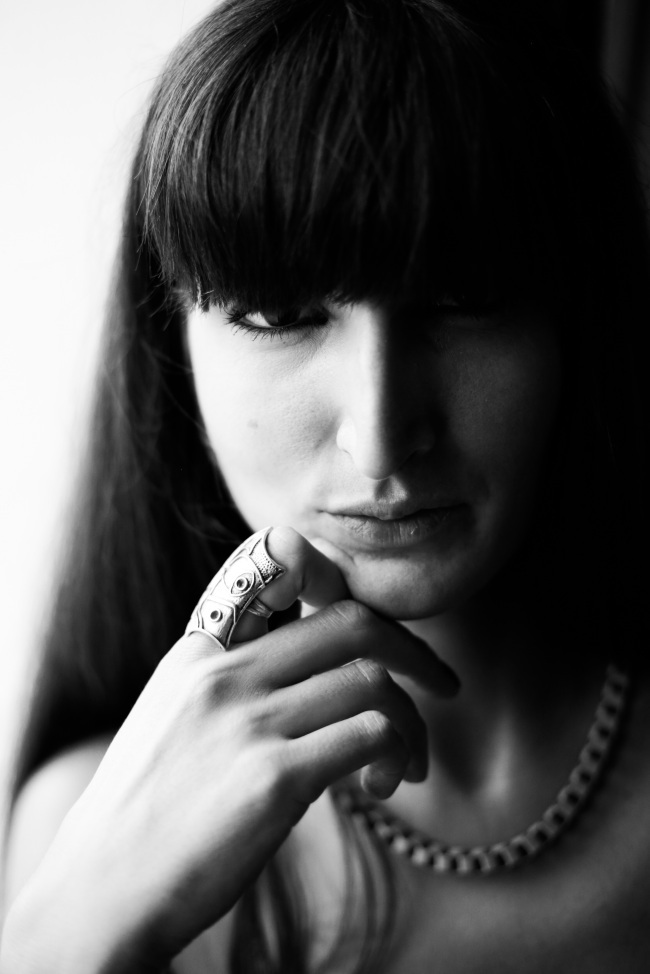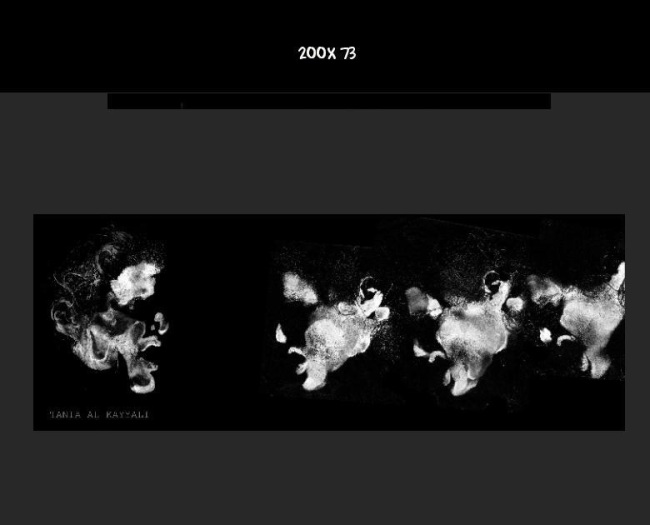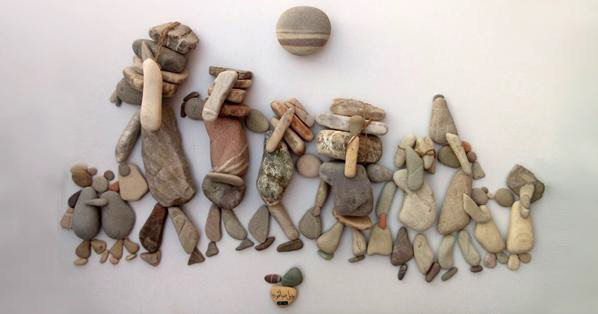Syrian artists find ways to express war’s impact
Seoul exhibition of shows artists overcoming obstacles to communicate with world
By Kim Hoo-ranPublished : Sept. 19, 2017 - 17:51
The Syrian War, now in its seventh year, has claimed some 500,000 lives. Of the prewar population of 22 million people, about 6.3 million people have been internally displaced, while more than 5 million have fled the country, becoming refugees.
Among those who left Syria is artist Tania Al Kayyali whose works are on exhibition at Art Space DA:MDAA in Yeonnam-dong, Seoul, as part of “Syria Art Exhibition: Do Fish Ever Get Seasick?” a group show of five Syrian artists. Of the five, only one currently lives in Syria -- the others, like Al Kayyali, are part of the Syrian diaspora.
Al Kayyali left her Damascus home in 2012, a year after the war started, and now lives in Serbia, the birthplace of her mother. She had been working in the graphic arts field after graduating from the University of Damascus when the war broke out.
Among those who left Syria is artist Tania Al Kayyali whose works are on exhibition at Art Space DA:MDAA in Yeonnam-dong, Seoul, as part of “Syria Art Exhibition: Do Fish Ever Get Seasick?” a group show of five Syrian artists. Of the five, only one currently lives in Syria -- the others, like Al Kayyali, are part of the Syrian diaspora.
Al Kayyali left her Damascus home in 2012, a year after the war started, and now lives in Serbia, the birthplace of her mother. She had been working in the graphic arts field after graduating from the University of Damascus when the war broke out.

The war has impacted her work, especially her medium. Because of her “new lifestyle,” life as a refugee, she doesn’t have a place to make prints. So she turned to other means, such as illustrations and paintings to express her feelings.
“My work is about what I feel. After you leave your home, you need to start from zero,” she said during an interview with The Korea Herald at the gallery last week.
Al Kayyali is often the subject of her works, as in “The Control,” a digital printing series on show at Da:MDAA. The series, produced after the gunning had been raging on for about a year, shows her frustration, anger and despair in the stark contrast of black and white.

She does not limit herself to black and white, however. In fact, most of her works created after the war, are very colorful. “I try to see the good in everything,” she said, adding, “I want to show how beautiful life is.”
During times of war, all materials are scarce, including materials needed to create art.
An artist who has successfully turned the table on artistic restrictions imposed by lack of materials is Syrian sculptor Nizar Ali Badr. The artist who currently lives in the port city of Latakia, Syria, turned to pebbles to create works that deal with the human sufferings caused by the war.
As even glue needed to hold his work together permanently has become too expensive, Ali Badr assembles and dissembles some 2,000 pebbles he has collected from the beach, making a statement about the transient and ephemeral nature of art and life itself in the process.
The smooth and rounded nature of the materials imbue the sculptor’s works with a sense of naivete and his works have been used as illustrations in “Stepping Stones: A Refugee Family’s Story,” a children’s illustrated book published in Canada. “Pictures of the East” inspired violinist Gidon Kremer to create an animated film based on the artist’s works, telling the story of the Syrian refugees.
During times of war, all materials are scarce, including materials needed to create art.
An artist who has successfully turned the table on artistic restrictions imposed by lack of materials is Syrian sculptor Nizar Ali Badr. The artist who currently lives in the port city of Latakia, Syria, turned to pebbles to create works that deal with the human sufferings caused by the war.
As even glue needed to hold his work together permanently has become too expensive, Ali Badr assembles and dissembles some 2,000 pebbles he has collected from the beach, making a statement about the transient and ephemeral nature of art and life itself in the process.
The smooth and rounded nature of the materials imbue the sculptor’s works with a sense of naivete and his works have been used as illustrations in “Stepping Stones: A Refugee Family’s Story,” a children’s illustrated book published in Canada. “Pictures of the East” inspired violinist Gidon Kremer to create an animated film based on the artist’s works, telling the story of the Syrian refugees.

The vast majority of those affected by the war that has been described as the “worst man-made disaster since World War II” are children and it is with the children that Al Kayyali hopes to work when she returns home for good. “I intend to go back. Go back and help others,” said Al Kayyali, who did return to Syria three years ago with the intention to stay, only to leave again after four months due to safety concerns. The artist who has worked on many children’s books and illustrations has in mind art workshops for children in Syria. “Children give me hope,” she said.
Other artists featured at “Syrian Art Exhibition” which runs through Oct. 14 are Paris-based Khaled Takreti, named among the 101 greatest artists living in France by French cultural magazine Art Absolument, who captures the human sufferings of war in a series of paintings, “Balluchons,” a bundle covered in wrapping cloth; Dubai-based Noor Bahjat Al Masri who sees the world as interconnected, yet isolated; and Rashwan Abdelbaki who experiments with various techniques and medium with the story Adam and Eve and their fall from Eden as a recurring motif.
Art Space DA:MDAA will hold screenings of “At Home in the World,” an award-winning documentary on the everyday lives of five refugee children at a Danish Red Cross asylum school, on Friday and Saturday at 8 p.m.
By Kim Hoo-ran (khooran@heraldcorp.com)
Other artists featured at “Syrian Art Exhibition” which runs through Oct. 14 are Paris-based Khaled Takreti, named among the 101 greatest artists living in France by French cultural magazine Art Absolument, who captures the human sufferings of war in a series of paintings, “Balluchons,” a bundle covered in wrapping cloth; Dubai-based Noor Bahjat Al Masri who sees the world as interconnected, yet isolated; and Rashwan Abdelbaki who experiments with various techniques and medium with the story Adam and Eve and their fall from Eden as a recurring motif.
Art Space DA:MDAA will hold screenings of “At Home in the World,” an award-winning documentary on the everyday lives of five refugee children at a Danish Red Cross asylum school, on Friday and Saturday at 8 p.m.
“Syrian Art Exhibition”
Art Space DA:MDAA
Until Oct. 14
Art Space DA:MDAA
Until Oct. 14
By Kim Hoo-ran (khooran@heraldcorp.com)
-
Articles by Kim Hoo-ran



















![[Today’s K-pop] Treasure to publish magazine for debut anniversary](http://res.heraldm.com/phpwas/restmb_idxmake.php?idx=642&simg=/content/image/2024/07/26/20240726050551_0.jpg&u=)